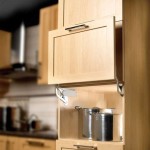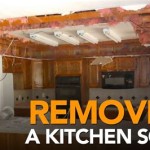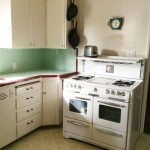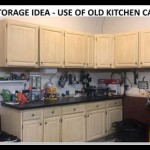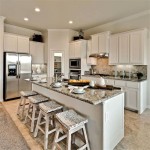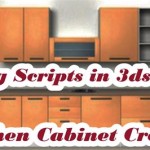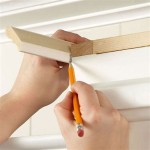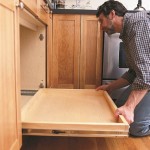Kitchen Cabinet Shelves Design: Optimizing Space and Functionality
Kitchen cabinet shelves are a fundamental component of kitchen design, providing essential storage space for cookware, dishes, food items, and various other kitchen essentials. Effective shelf design optimizes space utilization, enhances accessibility, and contributes to overall kitchen organization and functionality. Thoughtful planning, material selection, and installation techniques are crucial for achieving these objectives.
The design of kitchen cabinet shelves encompasses a wide range of considerations, including the type of shelving, material choices, dimensions, adjustability, and weight capacity. Each of these factors influences the overall performance and longevity of the shelving system. Careful consideration of these elements during the design process ensures that the shelves meet the specific storage needs of the kitchen while complementing the overall aesthetic.
Key Considerations for Kitchen Cabinet Shelf Design
Several key factors should be considered when designing kitchen cabinet shelves. These include the specific storage requirements, the available space within the cabinets, the desired aesthetic, and the budget constraints. A comprehensive evaluation of these factors will guide the selection of appropriate materials, shelf dimensions, and installation techniques.
The primary function of kitchen cabinet shelves is to provide storage. Therefore, it is essential to assess the types of items that will be stored on the shelves. Heavy items, such as cookware and appliances, require more robust shelving materials and construction methods than lighter items, such as spices and dry goods. The frequency of use of these items also impacts the overall design, with frequently used items requiring more accessible placement.
The available space within the cabinets dictates the dimensions of the shelves. Accurate measurements of the cabinet interiors are essential to ensure a proper fit. The height, width, and depth of the shelves should be carefully considered to maximize storage space while allowing for ease of access. The placement of shelves should also take into account the presence of pipes, wires, or other obstructions within the cabinets.
The aesthetic of the kitchen cabinet shelves should complement the overall design of the kitchen. The choice of materials and finishes can significantly impact the visual appeal of the shelves. For example, solid wood shelves can add a touch of warmth and elegance to a traditional kitchen, while stainless steel shelves can provide a sleek, modern look. The color and texture of the shelves should also be coordinated with the surrounding cabinetry and countertops.
Finally, the budget constraints will influence the choice of materials and installation methods. Less expensive materials, such as particleboard or melamine, can be used for shelves that will be hidden from view. However, more durable and aesthetically pleasing materials, such as solid wood or plywood, may be preferred for shelves that are visible. The cost of installation should also be factored into the overall budget.
Types of Kitchen Cabinet Shelves
A variety of shelving options are available for kitchen cabinets, each offering unique advantages and disadvantages. Common types include fixed shelves, adjustable shelves, pull-out shelves, and corner shelves. The choice of shelving type depends on the specific storage needs and the desired level of flexibility.
Fixed shelves are permanently attached to the cabinet walls, providing a stable and cost-effective storage solution. They are typically constructed from plywood, particleboard, or solid wood. Fixed shelves are ideal for storing heavy items and provide a clean, uniform look. However, they offer limited flexibility in terms of height adjustment.
Adjustable shelves can be moved to different heights within the cabinet, providing greater flexibility in storage configurations. They are typically supported by shelf pins or tracks. Adjustable shelves are ideal for storing items of varying heights and allow for customization of the storage space. However, they may be less stable than fixed shelves, especially when storing heavy items.
Pull-out shelves slide out from the cabinet, providing easy access to items stored at the back. They are typically constructed from wire, metal, or wood. Pull-out shelves are ideal for storing pots, pans, and other bulky items that can be difficult to reach. They can significantly improve accessibility and organization within the cabinets. However, they require more space than fixed or adjustable shelves and may be more expensive.
Corner shelves are designed to maximize storage space in corner cabinets. They are available in various shapes and sizes, including lazy susans, pie-cut shelves, and kidney-shaped shelves. Corner shelves effectively utilize the often-underutilized space in corner cabinets and can significantly improve accessibility. However, they may be more complex to install than other types of shelves.
Material Selection and Construction Techniques
The choice of materials and construction techniques significantly impacts the durability, stability, and aesthetic of kitchen cabinet shelves. Common materials include solid wood, plywood, particleboard, and metal. The selection of appropriate construction techniques ensures that the shelves can withstand the intended load and resist warping or sagging.
Solid wood is a durable and aesthetically pleasing material for kitchen cabinet shelves. It is available in various species, including maple, oak, cherry, and walnut. Solid wood shelves can add a touch of warmth and elegance to a kitchen. However, solid wood is more expensive than other materials and can be susceptible to warping or cracking if not properly sealed and maintained.
Plywood is a cost-effective and stable material for kitchen cabinet shelves. It is made from layers of wood veneer glued together, providing excellent strength and resistance to warping. Plywood is available in various grades and thicknesses, allowing for customization of the shelf's load-bearing capacity. It can be painted or stained to match the surrounding cabinetry.
Particleboard is a less expensive material made from wood chips and resin. It is often used for shelves that will be hidden from view. While particleboard is relatively inexpensive, it is less durable and more susceptible to moisture damage than solid wood or plywood. It is typically covered with a laminate or veneer to improve its appearance and durability.
Metal is a durable and modern material for kitchen cabinet shelves. Stainless steel is a popular choice for its resistance to corrosion and its sleek, contemporary aesthetic. Metal shelves are ideal for storing heavy items and are easy to clean. However, they can be more expensive than wood or particleboard shelves.
The construction techniques used to build kitchen cabinet shelves also affect their strength and stability. Common techniques include dadoes, rabbets, and screws. Dadoes and rabbets create strong, interlocking joints that resist racking and sagging. Screws provide additional reinforcement and help to secure the shelves to the cabinet walls.
The finish applied to the shelves also plays a crucial role in their durability and appearance. Paint, stain, and varnish can protect the shelves from moisture, scratches, and stains. The finish should be applied evenly and allowed to dry completely before the shelves are installed.
In conclusion, the design of kitchen cabinet shelves requires careful consideration of various factors, including storage requirements, available space, aesthetic preferences, and budget constraints. The selection of appropriate materials, shelving types, and construction techniques is essential for creating a functional and aesthetically pleasing storage solution that meets the specific needs of the kitchen. With thoughtful planning and execution, kitchen cabinet shelves can significantly enhance the organization and efficiency of the kitchen space.

Fufu Gaga Glass Doors Large Pantry Kitchen Cabinet Buffet With 4 Drawers Hooks Open Shelves 74 8 In H X 63 W 15 7 D Kf210128 045 Kpl1 The Home Depot

5 Clever Ideas For Kitchen Shelf Design

Kitchen Shelves And Racks Design Ideas Cafe

How To Organize Your Kitchen Cabinets And Pantry Feed Me Phoebe

Open Shelving Vs Cabinets Which Is Better Laurysen Kitchen Design

10 Benefits Of Open Shelving In The Kitchen

A Designer Trick For Maxing Out Kitchen Cabinet Storage

Kitchen Shelves Shelving

11 Open Shelving Kitchen Ideas Benefits And Alternatives

Kitchen Shelves And Racks Design Ideas Cafe
Related Posts

